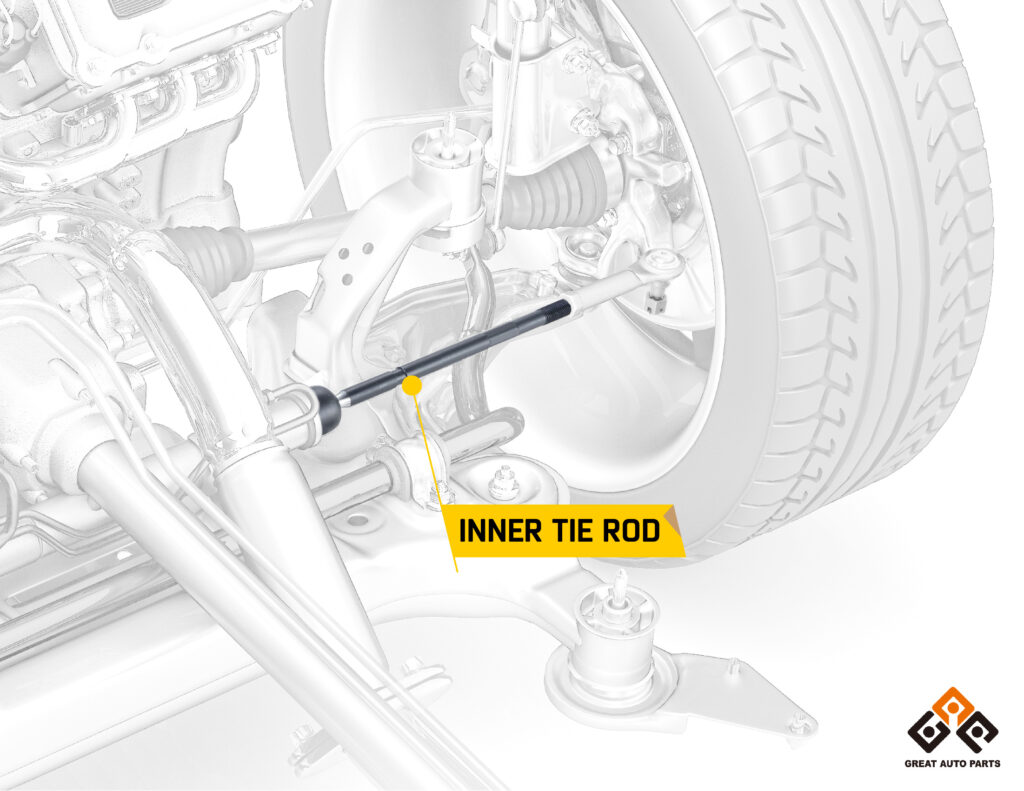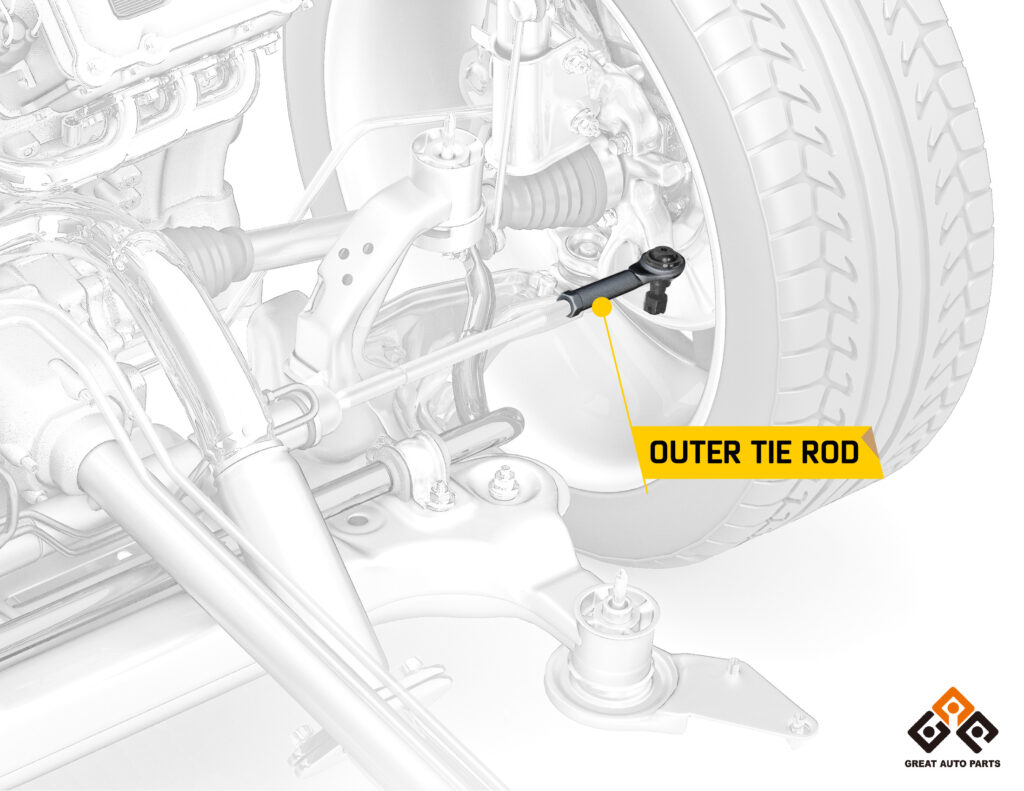Why tie rod end plays a vital role in your car’s steering?
What is a tie rod end
A tie rod end is a critical component within a vehicle’s steering system, commonly found in most four-wheeled automobiles. Each front wheel assembly incorporates an inner tie rod end and an outer tie rod end, facilitating the connection between the steering knuckle and the rack end. When a driver turns the steering wheel, these rods exert pushing and pulling forces on the front wheels, enabling the car to change direction as intended.
The function of tie rods in a vehicle
Tie rods are key to a car’s steering and suspension, linking the steering gear and knuckle to turn the wheels. They ensure front alignment, promoting straight driving and good handling. Proper tie rods provide precise control, prevent tire wear, and are vital for vehicle safety.
How tie rod ends enhance vehicle safety
Besides alignment, tie rod ends help absorb road shocks, improving ride comfort. If they fail, steering becomes less responsive, potentially causing dangerous unpredictable steering or loss of control.
The relationship between tie rods and suspension
Integral to steering and suspension, tie rods link the steering gear and knuckle, affecting both systems. Steering involves the wheel, column, gear, inner/outer rods, and knuckle. Suspension includes springs, shocks, struts, arms, and joints. These systems collectively provide stability, smooth handling, and comfort by managing road impacts, maintaining tire contact, and enabling precise steering.
Why steering tie rod ends are important
Steering tie rod ends are vital steering components connecting the rack or center link to the knuckle. Located at the outer ends of the rack/link, they use ball joints to attach to the knuckle. As the pivot between steering and wheels, they transmit driver input. Without tie rods, car control is impossible.
Differences between axial rod and outer tie rods
Steering tie rods are composed of two primary parts: the inner tie rod (rack end, also called axial rod) and the outer tie rod. The axial rod connects to the steering gear, while the outer tie rod connects to the steering knuckle. These two components work in conjunction to ensure accurate wheel response when the steering wheel is turned.
The Rack End is generally located within the steering mechanism and is less exposed to external elements, often resulting in a longer lifespan. Conversely, the outer tie rod is connected near the wheel and is more susceptible to wear and tear due to exposure to road conditions and debris.
While primarily a part of the steering system, steering rod ends also play a significant role in the vehicle’s suspension system by helping to maintain proper wheel alignment, ensuring the wheels are consistently pointing in the correct direction. This alignment is vital for even tire wear, proper vehicle handling, and overall driving comfort.
A comparison of Inner and outer tie rods
| Feature | Inner Tie Rod/ Axial Rod/ Rack End | Outer Tie Rod |
| Location | Inside steering mechanism | Next to the wheel |
| Function | Transfers steering force to steering linkage | Transfers steering force to wheel knuckle |
| Positional Requirements | Must be located inside steering mechanism | Installed near the wheel within the steering mechanism |
| Responsible Operation | Converts steering wheel input to wheel direction | Controls vehicle steering |
| Installation Information | Requires installation within steering mechanism | Requires installation near the wheel knuckle |
| Safety | Affects vehicle handling and safety | |
Lifespan of steering tie rod ends
The lifespan of tie rods can vary considerably based on several factors, including the vehicle type, driving conditions, and maintenance habits. While there isn’t a fixed mileage for replacement, understanding the factors influencing their durability can help determine when inspection or replacement might be necessary.
Driving conditions
Vehicles driven primarily on smooth urban roads tend to experience less wear compared to those frequently driven on rough or unpaved surfaces. Harsh weather and road salt can also accelerate wear.
Vehicle type and usage
Heavier vehicles and those with high mileage often put more stress on tie rod ends, leading to faster wear.
Quality of tie rod ends
The quality of the parts themselves significantly impacts longevity. OEM parts and high-quality aftermarket options generally offer better durability.
While a precise mileage is difficult to specify, outer tie rods typically last between 40,000 to 80,000 miles, axial rods also known as rack ends last as least 50,000 miles and up to 100,000 miles under normal driving conditions. Regular inspection, especially after 50,000 miles, is recommended.
Enhancing safety with heat-treated ball studs
Heat-treated ball studs significantly improve inner and outer tie rod safety by boosting strength, wear resistance, and stability, ensuring steering system reliability and minimizing failure. Their ability to bend during impact absorbs force, limiting steering damage and enhancing driving safety by reducing handling uncertainties.
Understanding heat treatment
Heat treatment is a process used to improve the physical and mechanical properties of metals, such as hardness, strength, and wear resistance. In automotive components, this involves heating the metal to a specific temperature and then cooling it rapidly or slowly to alter its micro-structure, making it tougher and more resistant to stress and deformation.
Benefits of heat-treated ball studs in tie rod ends
- Increased Strength and Durability: Heat-treated ball studs are significantly stronger, allowing tie rod ends to withstand greater forces without bending or breaking, ensuring longer life and reliable performance.
- Improved Wear Resistance: The hardened surface reduces friction-related wear, prolonging the life of tie rod ends, especially in demanding driving conditions.
- Enhanced Structural Stability: These studs maintain their integrity under extreme conditions, helping to prevent tie rod end failures that could lead to loss of steering control.
- Resistance to Fracturing: Increased toughness makes ball studs more likely to bend than break under severe impact, reducing the risk of complete steering failure.
Incorporating heat-treated ball studs into the design of inner and outer tie rod ends is a vital step in enhancing vehicle safety and performance. By increasing the strength, wear resistance, and structural stability of the ball studs, this process ensures that the tie rod ends can handle the demands of modern driving conditions, resulting in a more durable, reliable, and safe steering system.
Symptoms of a failing tie rod
A failing tie rod, particularly the inner one, can negatively impact a car’s steering and handling. Symptoms to watch for include:
- Uneven tire wear: A worn tie rod affects alignment, leading to irregular wear patterns on the tires.
- Unresponsive Steering: Excessive play between the tie rod and the steering knuckle results in less precise steering.
- Vibration in the Steering Wheel: A damaged tie rod can cause noticeable vibrations, especially while driving or braking.
- Squealing or Clunking Noises: Worn tie rods may produce squeaking or clunking sounds, particularly during turns or when driving over bumps.
Conclusion
Understanding the importance of tie rods and recognizing early signs of wear can help prevent steering problems and ensure your vehicle remains safe to operate. Regular maintenance and timely replacement of damaged tie rods are essential for optimal performance and safety.

